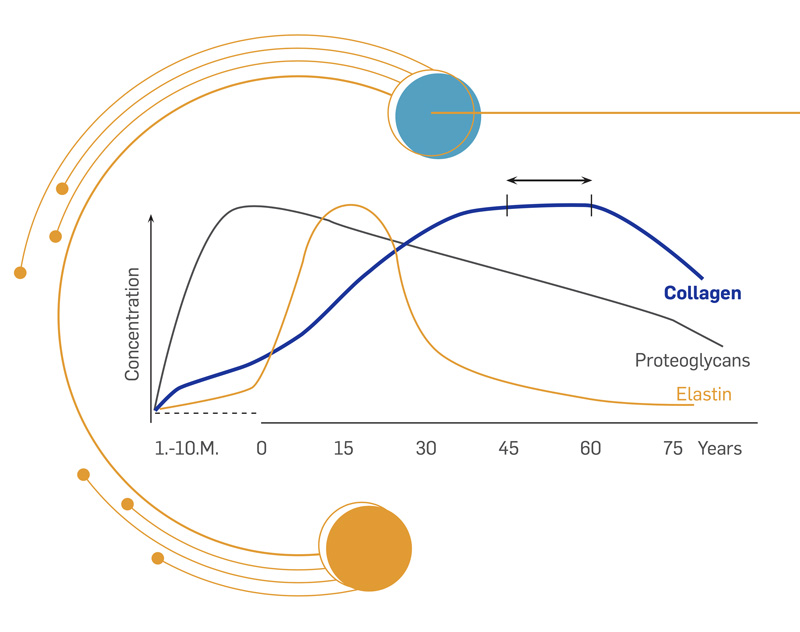
At a locomotor apparatus level, thinning and degeneration of cartilage surface appears, generating arthrosis, while tendon and ligament structureslose elasticity, which leads to and tendinosis and tendinopathies of various grade.
Biosynthesis of collagen, proteoglycans and elastin correlated to aging.
